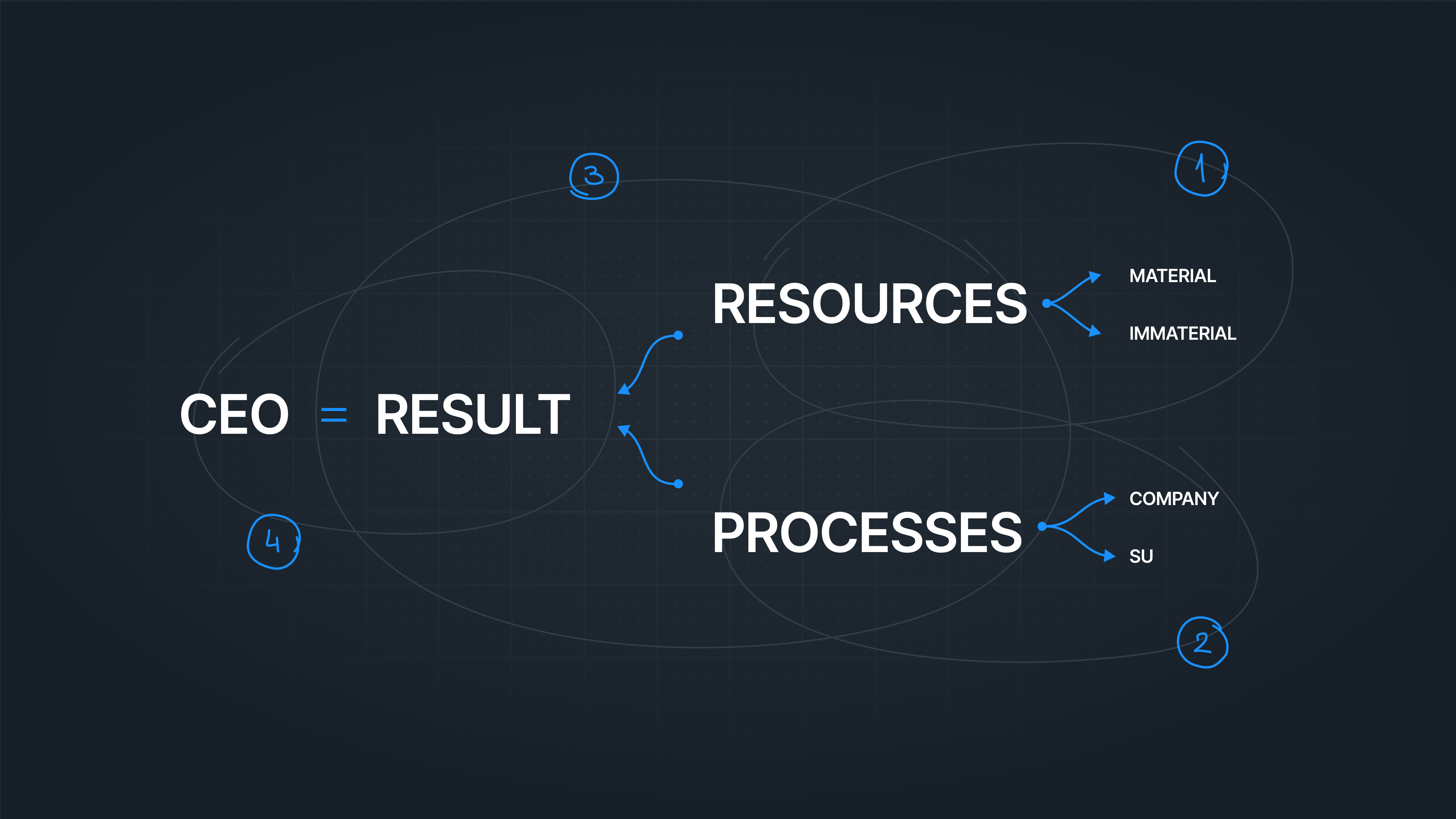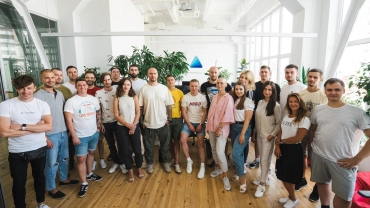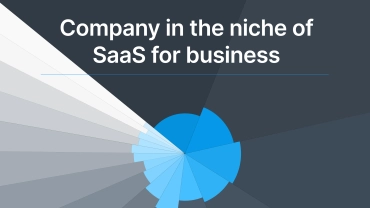Result is based on mathematical calculations.
Each person exists in the environment of results and their formation. This statement may seem dubious, because people, houses, businesses, decor items – are these really results? We figured out that any material or immaterial object in the world is a result of any processes, actions, circumstances.
For example, you need to build a house. To do this, you buy land with all the documentation, form a construction plan, install the foundation and gradually build a solid object. But in order to achieve a result (build a house), resources are needed:
- human resources (designers, builders, security experts)
- material resources (bricks, concrete, piles, slate, metal)
- immaterial resources (bank, tax and cadastral accounts)
By bringing together necessary resources and combining them in right order, you get a ready bank of resources for building a house. But this is not enough – you still need to correctly and efficiently execute all processes.
Built house is an example of endless number of results that are formed every day around us. The Vymex team had studied this pattern and applied it to the business plane, mathematically substantiating its performance.
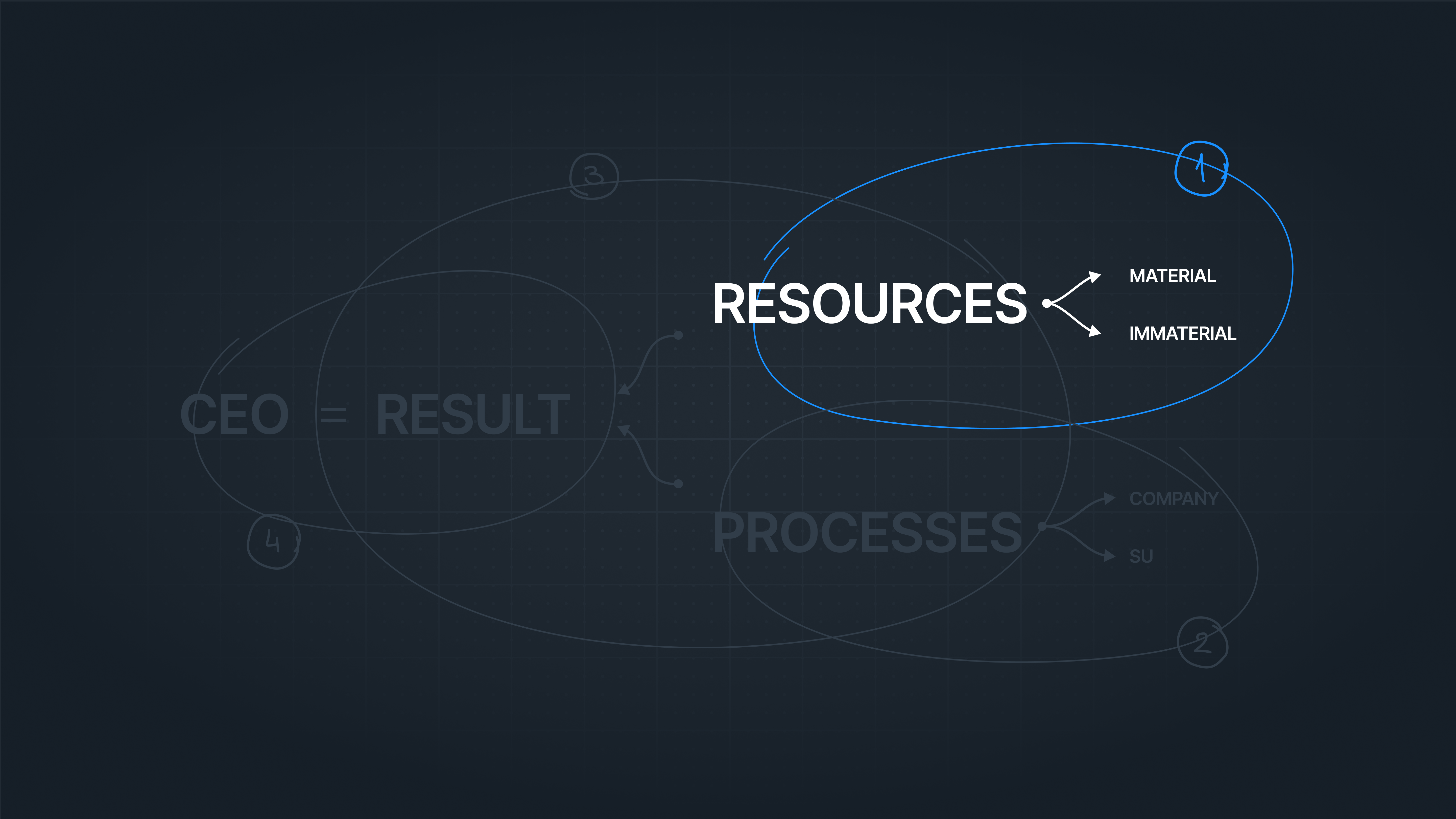
I. Form and combine resources: MR + IR = Resources.
The first component for any result formation is Resources. In the Vymex system, they are divided into material and immaterial, and by nature of assignment they are global and local.
In addition to obvious resources that come to mind in first place (money, time, appliances), there are many equally important ones, without which achieving results is much more difficult. We often do not notice them in our daily work, but this does not take away their significance. Without access to training materials and accounts on third-party services, without logins and passwords for free access to them, the effectiveness and efficiency of work done is reduced. In the Vymex system, all resources are divided into:
- material (computer, printer, monitor) – can be assigned to official or located in resource warehouse
- immaterial (passwords, logins, accounts) – resources intended for storage, delegation and accounting with access to corporate tools
Depending on level, SU (structural unit) has material resources at its disposal:
- local – type of material resources that are attached to official (SU) and are used for their intended purpose;
- global – type of material resources that are attached to subordinate official (SU) and are used for their intended purpose, but are available to senior officials (I-III levels).
Each person has a set of these resources, which he/she manipulates to obtain own desired result. Depending on the nature of goals and objectives, each person uses a certain set of resources, using resources of other people as needed, and produces new result. Employees of company exchange resources among themselves through combination fields – the conditional place and the moment of combining resources in order to obtain new results. The resources of both one person and other people are combined.
This is how company's result is formed. From the point of co-founders and CEO view, a company is also a resource for purpose of obtaining results and achieving the set goals.
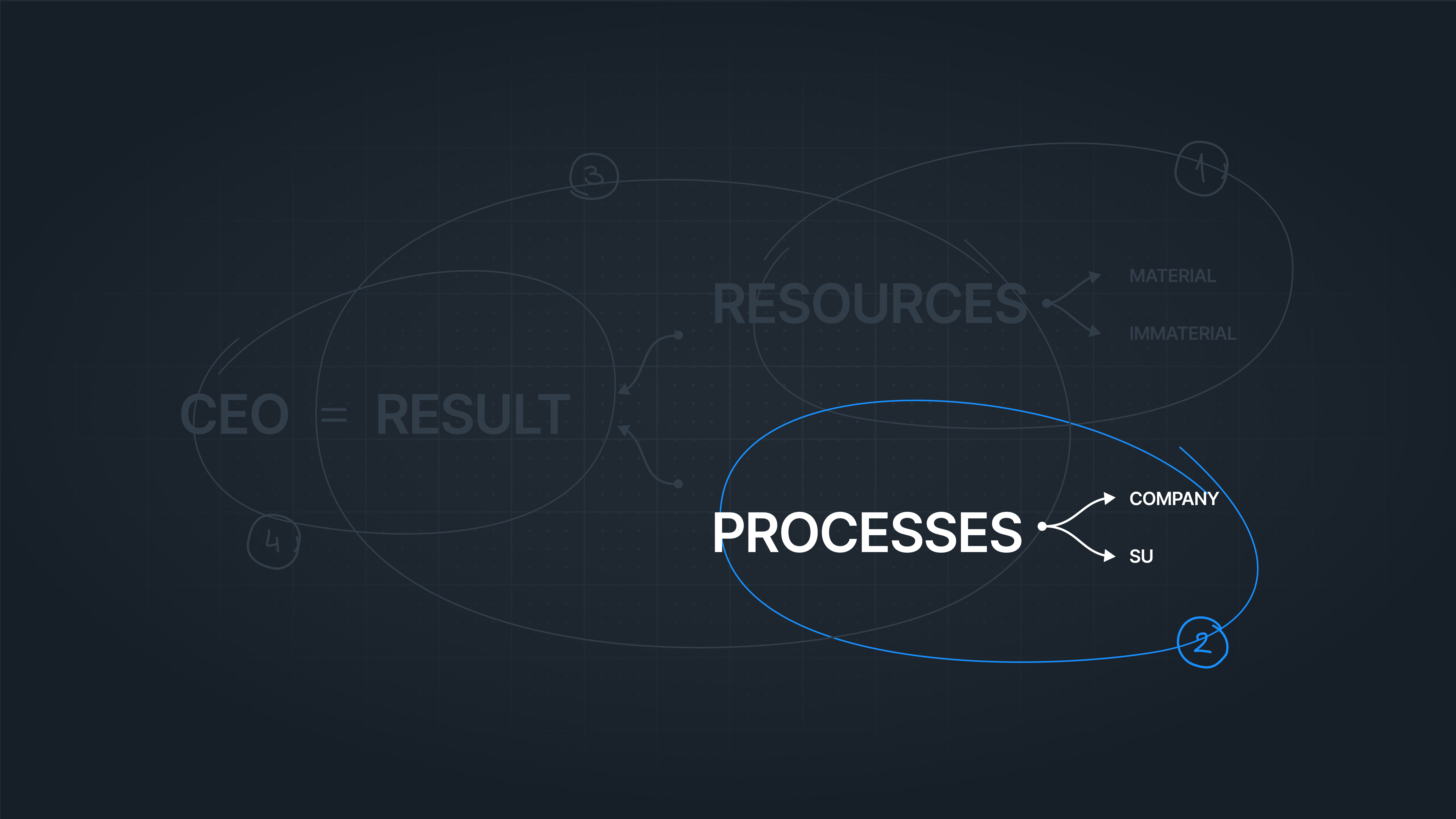
II. Create and execute processes: SU Processes + Company Processes = Processes.
An equivalent component for result formation is Processes, which, based on the terminology of Vymex, is a set of general rules and instructions for employees/structural units to perform certain actions. With its help, the probability of successfully achieving goals is significantly increased, as well as the efficiency of resource use.
There are two types of processes in the Vymex system:
- SU Processes – are assigned to official in order to clearly comply with the duties entrusted to a particular structural unit. Example: searching for references (SU – designer).
- Company Processes – are assigned to whole structural level, which consists of various SUs; are performed equally by each SU. Example: working with a calendar (for SUs of IV level).
An employee and a manager work not only on improving permanent processes, but also on creating and describing new ones. For example, if targetologist tests a new audience in the context of advertising campaign, he gets new experience, resorts to new actions – all this needs to be fixed.
If employee uses resources in a quality and coordinated manner, following the processes of his SU and company, his results and indicators will be appropriate. It is equally important to make these instructions (processes) for official as informative and useful as possible. This is the prerogative of CEO, heads of departments, as well as of operations manager.
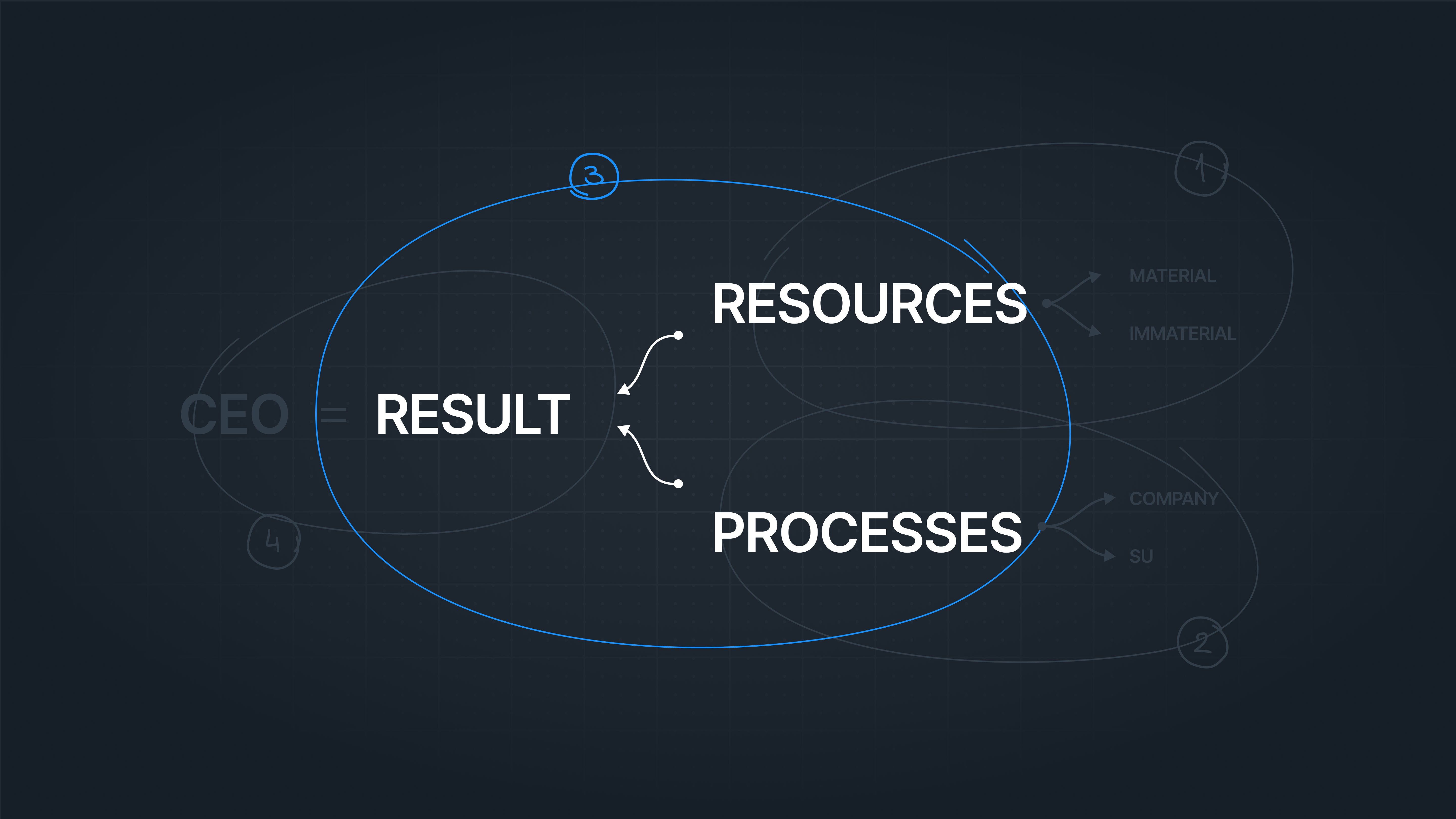
III. Average all indicators and get: Result = (Processes + Resources)/2.
As soon as the processes and resources are formed, as soon as the employee begins to effectively combine resources and follow the processes, he gives the result – final or intermediate total of the interaction of resources in the Vymex system. It is measured both qualitatively and quantitatively.
Processes and resources have different dimensions. They cannot be objectively assessed in terms of the importance of one in relation to the other. Therefore, in order to get an understandable result, we again turned to mathematics. It is averaging that gives the understanding that incommensurable things must be balanced. The same story is with result: by combining resources and processes, we managed to average them to understand the result.
Suppose the PR manager (SU of IV level) has received the task of publishing an article on an external source. The employee evaluates his set of resources and selects the appropriate ones from them: contact with the journal editor, communication skills, laptop and telephone for communication, skills in PR material writing, authority to approve the article and edit it. In addition to his own resources, the manager connects the copywriter’s resources (writing a text), resources of the chief marketer (consulting and clarifying details), etc.
After formation of the bank of resources, the official begins to perform the task. He refers to processes of his SU and the company, thereby following the prescribed instructions in them. It is the processes that will allow you to achieve a high-quality result with the highest confidence.
As a result, the PR article was published on the journal's website and the result was achieved by the official.
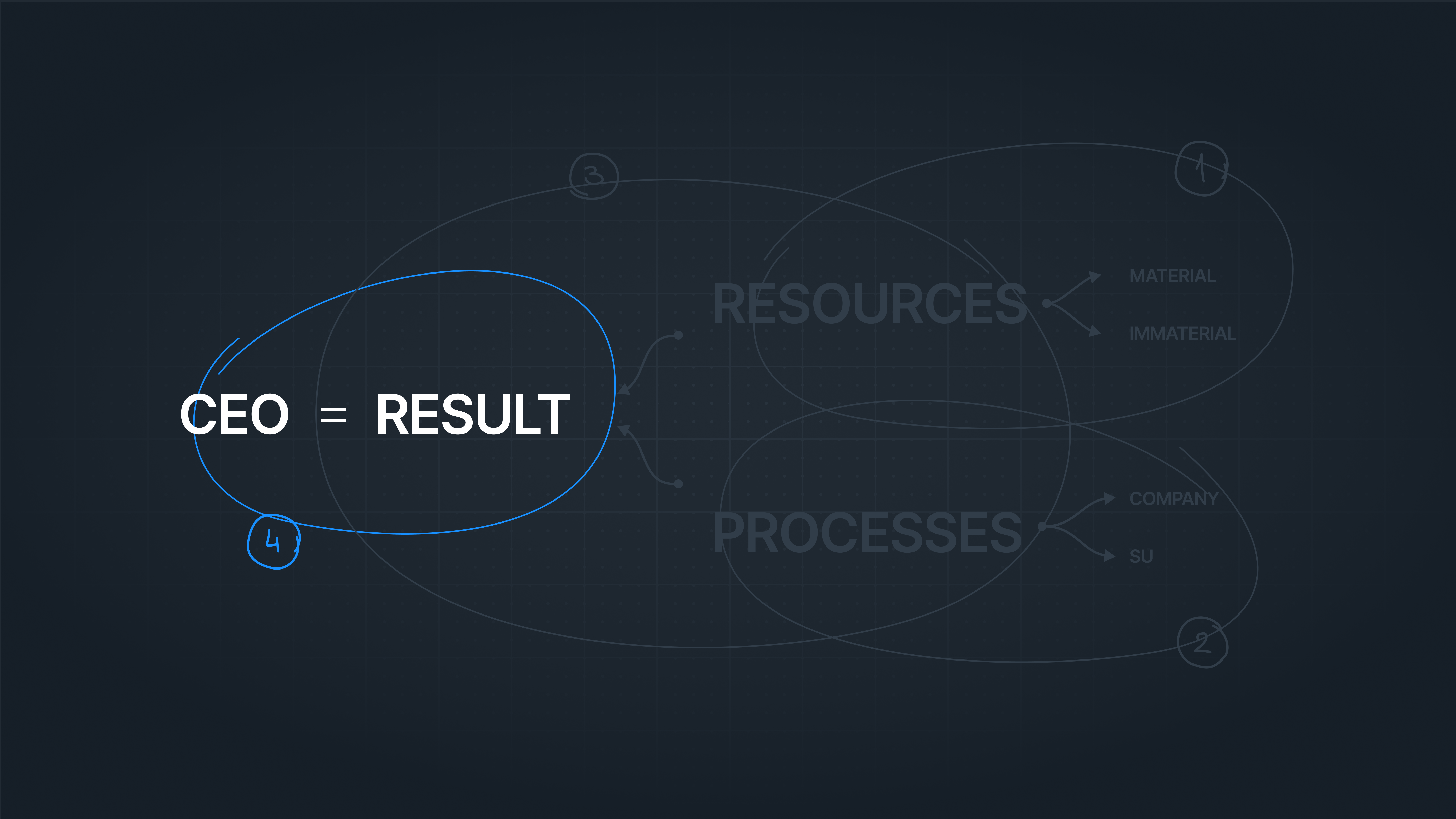
Bottom line: CEO = company result.
Vymex has built its own company management system. Based on its postulates, each company consists of job cells – structural units (SU). They are arranged in a hierarchical tree and can be located at one of four levels: SU level directly depends on the set of powers and responsibilities that CEO (I level SU) assigns to it. But managers of II and III levels also make proposals for structuring, forming the powers and responsibilities of structural units in their branches/directions.
As regards adherence to processes and careful implementation of tasks/plans, this is done by I Level SUs (CEO), II Level SUs (heads of areas) and III Level SUs (heads of departments). In addition to their leadership duties in relation to SU levels below, they perform planned tasks. Ultimately, any company is formed from results of its structural units.
The process of interaction between resources and processes lasts as long as a company exists. All results are collected together and sent along a hierarchical path to I Level SU (CEO). It is this position that assumes maximum powers and organizational regalia, including the presentation of the company's results.
